Lab Culture: Nutrition Science Clinical Research Center
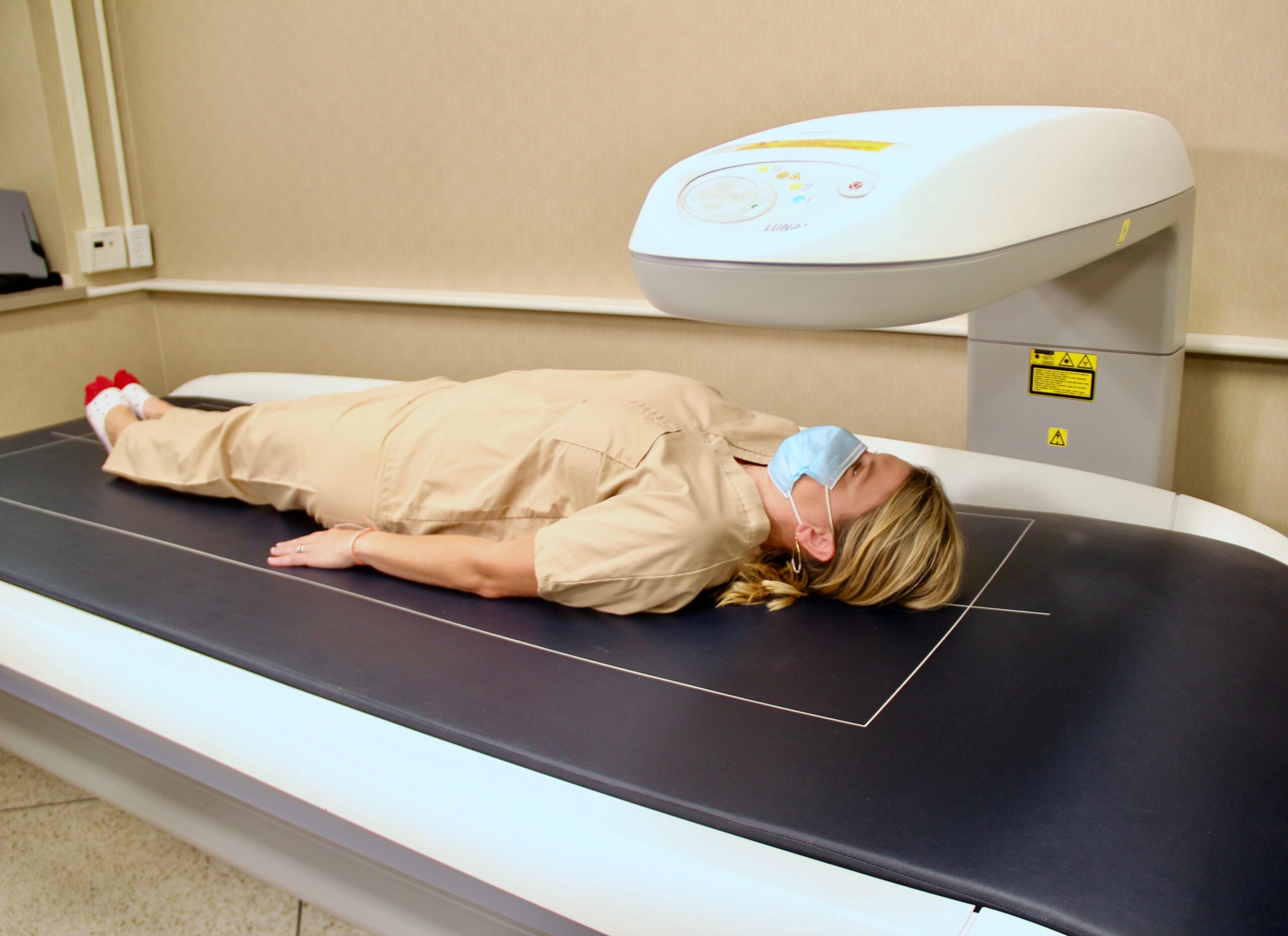
Amy Wright, bionutrition manager of the Nutrition Science Clinical Research Center, poses on the lab’s DEXA (dual energy X-ray absorptiometry) scanner, which collects X-ray images in less than 10 minutes.Tim Brouk
Written by: Tim Brouk, tbrouk@purdue.edu
Hundreds of thousands of restaurants in the United States had to adapt during the COVID-19 pandemic, which included shifting to more carryout business.
The Purdue University Nutrition Science Clinical Research Center shifted to carryout to continue its research on how the human body reacts to certain kinds and amounts of food. The facility, which houses a full industrial kitchen along with its testing areas and a blood analysis lab, meticulously measures out meals by the gram for participants to pick up at Stone Hall. The meals are carefully packaged in containers and bagged up.
Pre-pandemic, these meals were served to participants in a feeding room, which can hold up to 40 people. Today, participants’ meals are accompanied by small paper slips, which list preparation instructions and ingredient contents.
“In doing so, we’re able to control exactly what people are consuming — the level of protein, the level of vitamins, minerals and fat,” said Dennis Savaiano, the Virginia Claypool Meredith Professor of Nutrition Policy and director of the Purdue Nutrition Science Clinical Research Center.
Recent studies have measured bone density, protein levels in diet and diet quality, utilizing human subjects in clinical trials. Participants requiring blood, urine or fecal analysis still arrive to the Clinical Research Center, following Protect Purdue protocols.
The goal of the work is to understand how even slight differences in diet affect the human body.
“What’s the elderly protein requirement? What’s the right amount of calcium a child should consume to maximize their bone density?” Savaiano asked. “How much vitamin D can help prevent or treat COVID? These are really interesting questions and the kind of questions we can get answers to in a facility like this.”

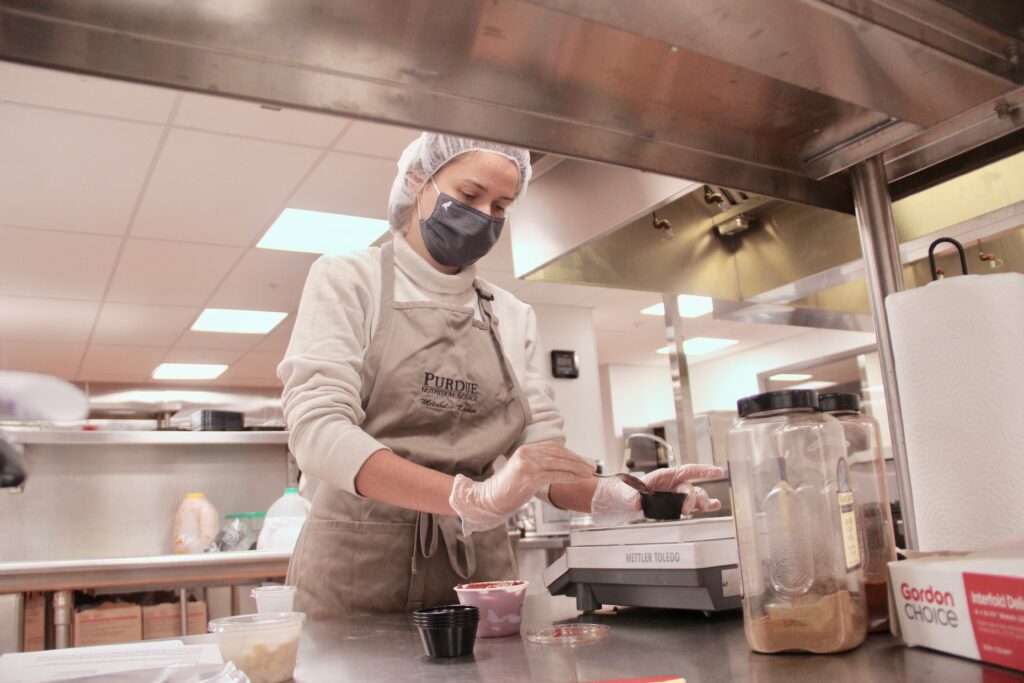
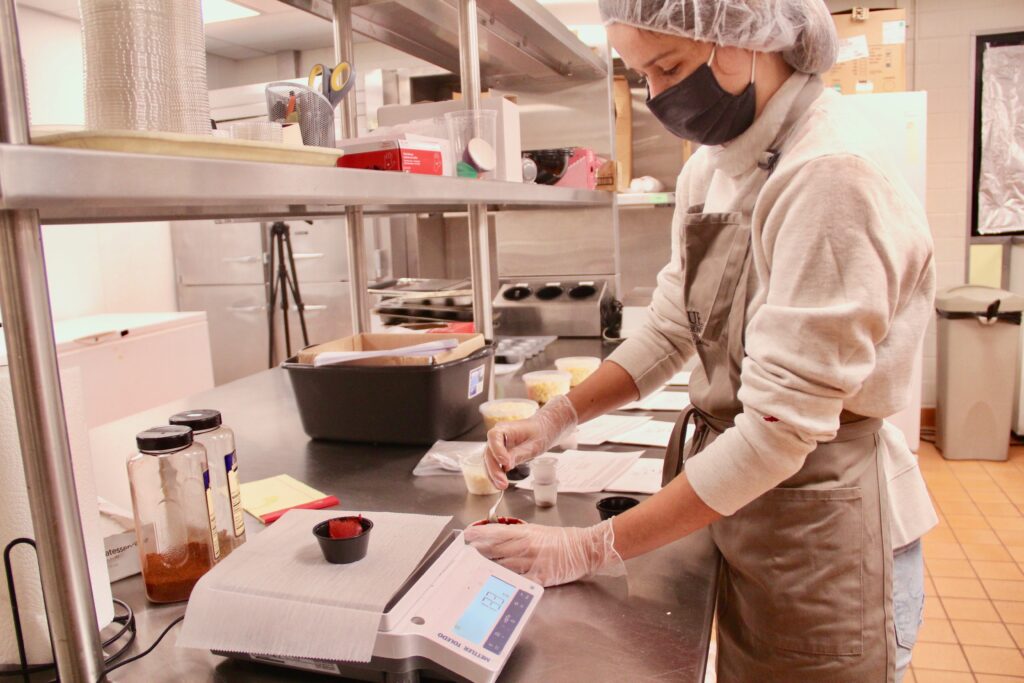
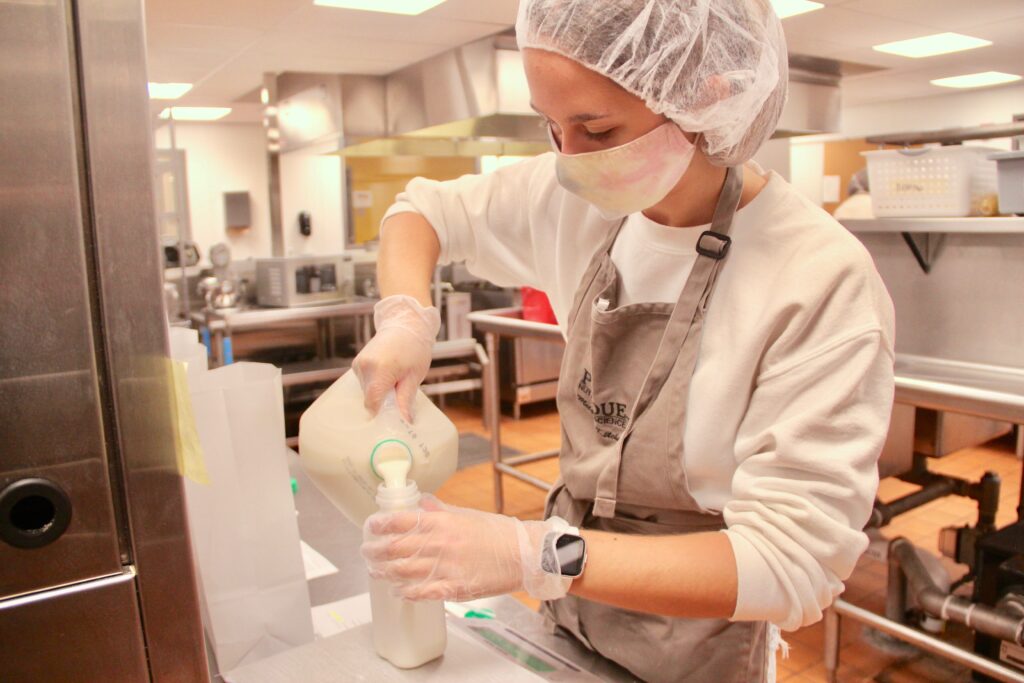
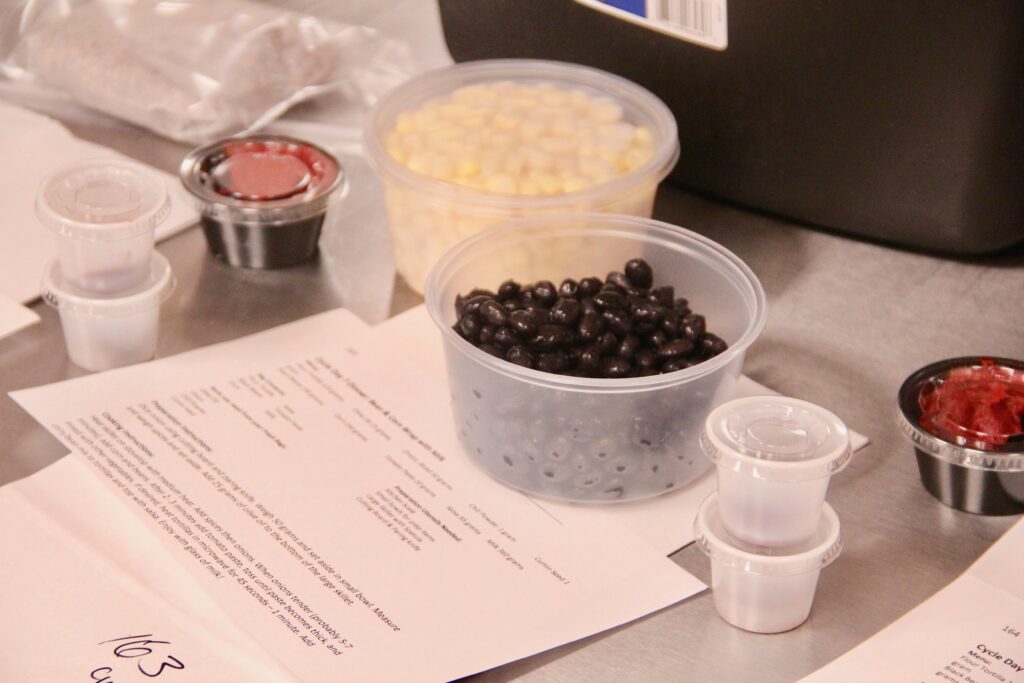
Nutritious history
Purdue has been conducting clinical feeding studies since the 1980s. For many years, the studies centered on Purdue students, finding space in residence halls as well as fraternity and sorority houses.
The Clinical Research Center allows students and community members to comfortably get tested and easily obtain their specialized meals for studies. The facility brought more cohesion to the research.
“It’s much more efficient, much more cost effective, and useful for the campus and the department,” Savaiano said. “We can readily assess the metabolic measures of dietary changes.”
The center inherited its metabolic kitchen space from the John Purdue Room, which was housed in Stone Hall for almost 60 years. Having a centralized space with enough room for storing, measuring and assembling meals has proven invaluable.
“It’s a tool that not that many universities have available to them,” said Savaiano about his facility’s kitchen. “We are a facility that provides service across the state of Indiana for IU, Notre Dame and Purdue as part of the Indiana CTSI — the Clinical and Translational Sciences Institute.”
Full body scanning
Some studies in the center require precise body composition measurements of the participants. Measuring percentages of fat, protein, bone density and water in the human body requires sophisticated scanning techniques.
Savaiano utilizes a full-body DEXA (dual energy X-ray absorptiometry) scanner. The participant lays on the scanner bed while the scanner’s arm moves slowly up and down their body. Only one back and forth pass is needed to collect the X-ray images, which are then analyzed by the researcher. The scanning process takes less than 10 minutes.
From the kitchen
A recent visit to the kitchen saw undergraduate researchers preparing meals for participants in various studies.
With her hairnet and plastic gloves in place, Emily Hutchins, a junior majoring in nutrition science, weighed out mixed bean stir-fry ingredients — soy sauce, green beans, oranges and more — into small containers. All participants received the same amount except half were given a portion of beef to mix into the stir-fry. The study will measure the health effects of the beef in the meals compared to the vegetarian version.
Another study saw what effect different amounts of carbohydrates or protein will have on the participants.
“One person will get a lot of carbs and another person will get less. Earlier, I gave one person 55 grams of croutons and the next person got five (grams),” said Sarah Haaser, a sophomore in nutrition science.
After months in the lab, Haaser has the uncanny ability to guess weights of certain foods before they hit the scale. It’s always a cause for celebration when she can get the ingredient’s weight correct on the digital scale after the first try.
“With certain ingredients like butter or tofu, I can eyeball five grams, for example, and be within 0.2,” she laughed. “It’s usually the best part of my day here.”
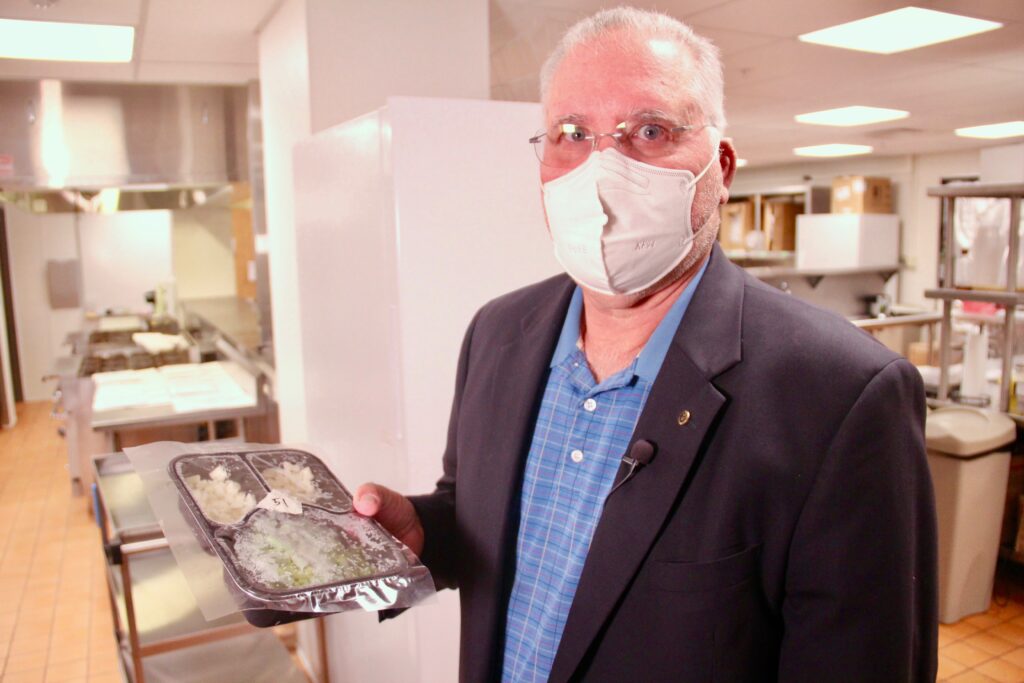

Lab Culture explores the people, research and traditions of the laboratories and facilities that help the Purdue College of Health and Human Sciences discover solutions to make lives better.
Discover more from News | College of Health and Human Sciences
Subscribe to get the latest posts sent to your email.